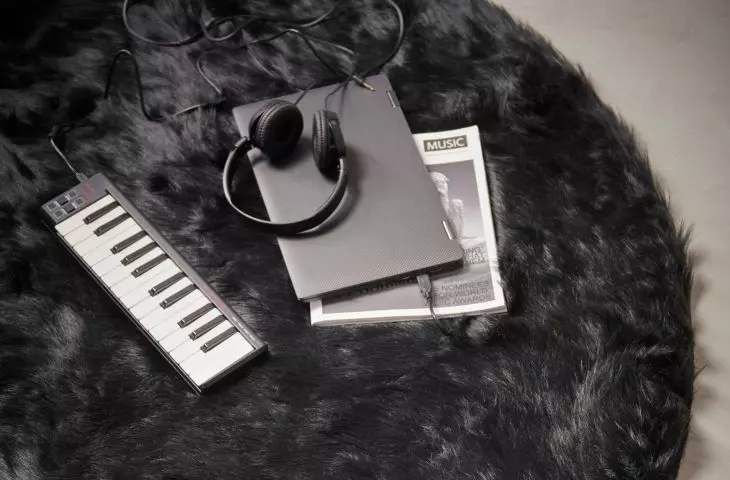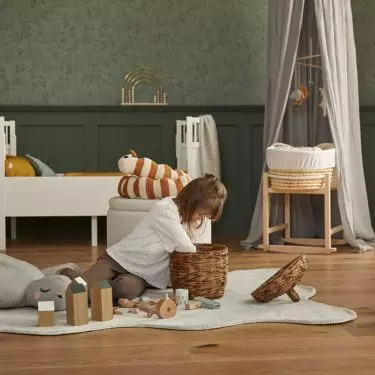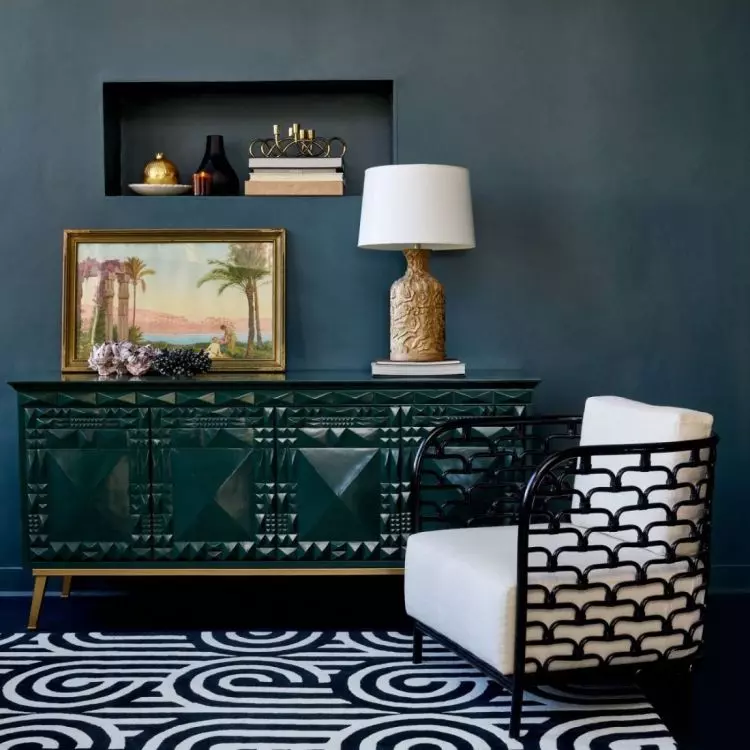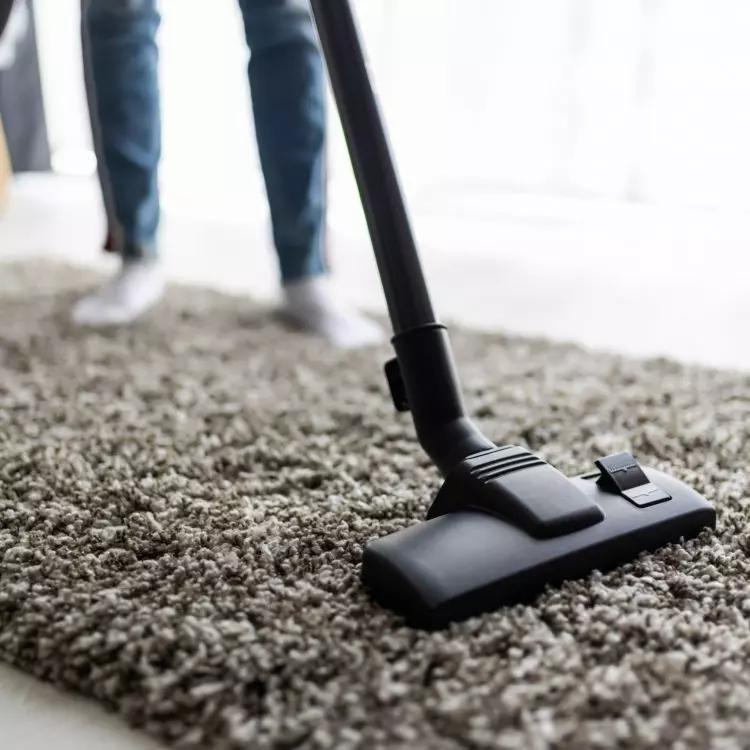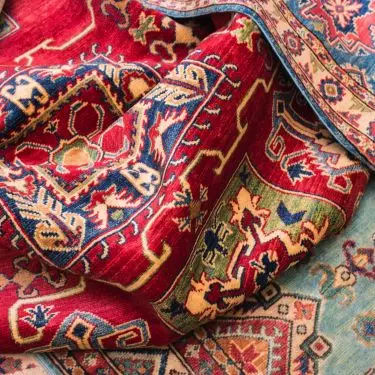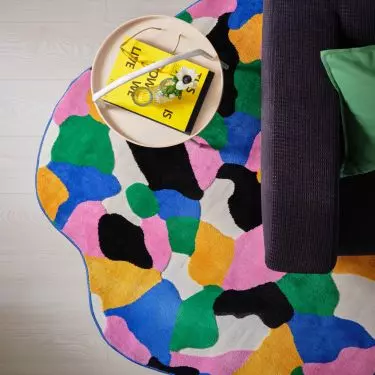Choosing a carpet is a decision that may seem trivial, but in fact is an important part of interior design. A carpet not only affects the aesthetics of a room, but also brings comfort and warmth to our homes. A properly selected carpet can create an atmosphere conducive to rest and relaxation, while adding character and individuality to the space.
Choosing a rug
Where to buy a rug?
Choosing a rug from a good manufacturer ensures high quality, aesthetics, safety and comfort. A properly made and fitted carpet can become a durable and elegant interior decoration that pleases the eyes and increases the aesthetic value of our homes. One such manufacturer is Dywilan. It is also worth checking out the offer of the Agnella company.
The right carpet can emphasize the interior design
© IKEA
Types of carpets
Woven carpets
Handmade Persian carpets from Iran (Persia) with distinctive patterns and colors or oriental carpets from countries such as India, Turkey, China, etc.
Embroidered carpets
Tapestry - hand-embroidered carpets with rich patterns, often depicting scenes from daily life or landscapes.
Braided rugs
Made of strings or braided cotton fibers tied together, usually having pastel colors.
Long pile rugs
Shaggy - rugs with long and fluffy pile, which add a cozy touch to the interior.
Hand tufted rugs
Created by pressing the fibers through the back of the rug, creating different patterns.
Rugs made of natural materials
Made of wool, durable and stain-resistant, or jute fiber, popular for boho style.
Synthetic carpets
Composed of polypropylene fibers, durable and easy to maintain, or acrylic with a look similar to wool.
Long-tufted carpets
Constructed using digital printing technology, which allows the creation of intricate designs.
Outdoor rugs
Made of plastic. Suitable for use on terraces and gardens, resistant to weather conditions.
Choose from woven, embroidered, plaid, long-pile, hand-tufted, natural or synthetic, long-pile and outdoor rugs
Photo by Lida Sahafzadeh © UNSPLASH
What carpets are fashionable in 2023?
As environmental awareness grows, carpets made of natural fibers such as wool, cotton, jute and silk are gaining popularity. So pay attention to environmentally friendly products. Rugs with ethnic patterns, such as Persian, Moroccan, Turkish or Asian, are still very popular. These distinctive patterns and colors add uniqueness and style to an interior. Also, vintage carpets or those with an aged effect still do not go out of fashion. Shaggy carpets with long and soft pile are still in vogue. They add a cozy character to the interior. Colors inspired by nature, such as beiges, browns, shades of green and blue, are still popular. If you like bolder arrangements, you can opt for rugs with geometric patterns, such as chevrons, triangles, lines or rhombuses, or models with an ombre effect, i.e. a gradual transition of colors from light to darker or vice versa.
How to choose a carpet for the living room?
Buying the right carpet for a living room can be a challenge, as this accessory can affect the atmosphere and appearance of the entire room. Here are some tips that can help you during this process:
Size
To begin with, decide how big a rug you need. Measuring the floor area and determining how much of the living room you want to cover with a rug is key. You can choose a smaller rug to delineate a specific space, or a larger one to cover a significant portion of the room.
Style and pattern
Choose a rug that matches the style and decoration of your living room. You can choose a solid color, a subtle pattern or a more bold graphic, depending on what works best with the rest of your decor.
Material
You can choose from a variety of materials, such as wool, cotton, polyester, nylon, silk, etc. Wool is often considered the most durable and pleasant to the touch material, but other rugs may be more affordable.
Color
Choose a carpet color that harmonizes with your living room palette. You can choose a rug that is contrasting to become the centerpiece of the decor, or one that is in similar shades to other decorative elements.
When choosing a rug for your living room, pay attention to the size, style, material and color of the rug
© Carpets & More
Carpet for the kitchen - is it a good idea?
The kitchen is a place where there is a lot of moisture, stains and dirt. However, this does not mean that you have to give up on putting a carpet in it. Here are some tips to help you choose the right carpet for the kitchen:
Material
Decide on a rug made of easy-to-clean and moisture-resistant material. Rugs made of synthetic fibers, such as polypropylene, nylon or acrylic, work well in the kitchen. They are resistant to stains and moisture, making them easy to keep clean.
Size
Choose a rug of the right size that fits your kitchen space. Avoid overly large rugs, which can make it difficult to move chairs or open doors.
Non-slip pads
Make sure there is a non-slip pad under the rug. This will help prevent the rug from sliding and increase safety when cooking.
Color and pattern
Choose a carpet color and pattern that will resist dirt and stains. Light colors maybe less practical in the kitchen, so consider darker shades or rugs with patterns to hide any minor dirt.
Short pile
Choose a carpet with short pile, which will be easier to keep clean. Shorter fibers will be less likely to trap crumbs or food debris.
Ease of cleaning
Make sure the rug is easy to clean. Ask the retailer about the material properties and maintenance of the rug so that you choose one that will be practical to use.
Rug for a child's room
A rug in a child's room is actually essential. It is a space for relaxation and play for a toddler. However, it must meet certain criteria. Choose a carpet that is nice and soft to the touch to ensure the comfort of the toddler. Models with short pile will also work better. It will be easier to keep it clean, and the child will move more freely on it. The material is also important. Decide on a rug made of safe and durable materials. Rugs made of wool, cotton or synthetic fibers, such as polypropylene or nylon, are a good choice for a child's room. Opt for a model in bright, cheerful colors or with fun patterns that will interest your child. You may want to consider a rug with educational patterns, such as letters, numbers, shapes or maps to help your child learn. Make sure there is a non-slip pad under the rug to prevent the rug from sliding during play.
A rug in a child's room will be the perfect place to play
© WestwingNow
A rug for an allergy sufferer
If you suffer from allergies or have an allergy sufferer at home, choose a rug that minimizes the risk of allergies and helps keep the room clean. Here are some tips to consider when choosing a rug for an allergy sufferer:
Material
Choose a carpet made of natural fibers, such as wool or cotton, which are less likely to collect dust and dust mites. Avoid carpets with long and dense pile, which can attract more allergens.
Anti-allergen fibers
Some companies offer carpets with anti-allergen fibers, which reduce the risk of allergic reactions.
Regular cleaning
Regardless of the type of carpet, regular vacuuming is key for people with allergies. It's best to choose a vacuum cleaner with a HEPA filter, which absorbs dust particles and allergens. If possible, have your carpet cleaned regularly by a professional company that uses special methods and agents to get rid of allergens from inside the carpet.
Avoid floor coverings
Floor coverings, especially old and poorly maintained ones, can accumulate more allergens than carpets, so it's better to avoid them in rooms where a person with allergies resides.
Non-slip pad
Make sure there is a non-slip pad under the carpet, which will help keep the carpet in place, but also make it easier to wipe and clean.
Eliminate moisture
Allergens, such as dust mites, like a moist environment. Maintain adequate humidity in the room to reduce their occurrence.
Regular vacuuming of your carpet will keep it clean
© Freepik
How to clean a carpet?
Vacuuming your carpet at least once a week will help remove daily dust and dirt. Choose the right nozzle for your vacuum cleaner to avoid damaging the fibers, especially if your carpet has long pile. As soon as a stain develops on the carpet, try to remove it. Use a tissue or sponge to gently squeeze out the excess liquid and then gently clean the stain from the outer edge to the center so as not to spread it. You can use special stain cleaners available in stores. Depending on the material and size of your carpet, you can wash it. Do it yourself, using a special shampoo for carpets, or have a professional cleaning company do the job. If you have washed the carpet, make sure it is properly dried. If possible, dry the carpet in the sun or use a fan to speed up the drying process. Avoid placing furniture on a wet carpet until it is completely dry. Once in a while, it's a good idea to have your carpet professionally cleaned to thoroughly clean it and restore its freshness.
***
We encourage you to use the database of reputable and reliable Carpets and Rugs Manufacturers we are building on the Products for Home portal, as well as the articles we publish about carpets and rugs.



